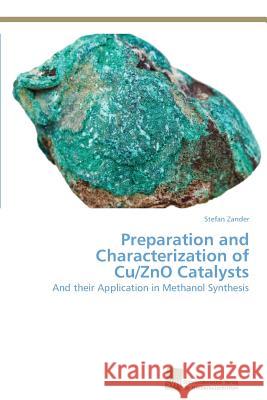Preparation and Characterization of Cu/ZnO Catalysts » książka
Preparation and Characterization of Cu/ZnO Catalysts
ISBN-13: 9783838150208 / Angielski / Miękka / 2014 / 132 str.
Methanol is one of the most important industrial base chemicals and also a starting material for many organic syntheses. A steadily rising amount is used as fuel or fuel additive because methanol can serve as liquid hydrogen carrier. In the chemical industry, methanol is produced from synthesis gas over Cu/ZnO based catalysts. The catalyst is prepared by a multi-step synthesis (co-precipitation, calcination, reduction). Already in early stages of the preparation structural characteristics can provide indications for the resulting activity of the final catalyst. In order to investigate correlations between preparation parameters, microstructure and activity of Cu/ZnO based catalysts, the effects of the pH during co-precipitation and aging, use of MgO instead of ZnO and doping with Ga-ions were examined in the present work. Precursors, calcined and reduced samples were investigated with different methods (XRD, XRF, physisorption, TPR, RFC, UV-Vis spectroscopy, XAS, XPS, SEM, TEM) and selected samples were tested in methanol synthesis.
Methanol is one of the most important industrial base chemicals and also a starting material for many organic syntheses. A steadily rising amount is used as fuel or fuel additive because methanol can serve as liquid hydrogen carrier. In the chemical industry, methanol is produced from synthesis gas over Cu/ZnO based catalysts. The catalyst is prepared by a multi-step synthesis (co-precipitation, calcination, reduction). Already in early stages of the preparation structural characteristics can provide indications for the resulting activity of the final catalyst. In order to investigate correlations between preparation parameters, microstructure and activity of Cu/ZnO based catalysts, the effects of the pH during co-precipitation and aging, use of MgO instead of ZnO and doping with Ga-ions were examined in the present work. Precursors, calcined and reduced samples were investigated with different methods (XRD, XRF, physisorption, TPR, RFC, UV-Vis spectroscopy, XAS, XPS, SEM, TEM) and selected samples were tested in methanol synthesis.











